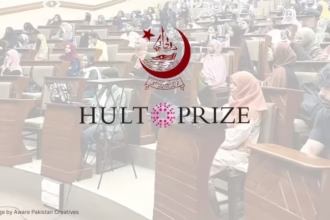History frequently establishes precedents that set the tone for future generations, a phenomenon that is particularly true in geopolitics in light of the new world order. A paradoxical dilemma inherent in the term ‘new world order’ – most frequently used to characterize the advent of a unipolar system following the Soviet Union’s demise in 1989 – is that the actors in the drama fluctuate and evolve, yet the plot stays the same.
The German Empire, Imperial Japan, Hitler’s Germany, and the Soviet Union (USSR) – four historical adversaries of the United States’ hegemonic domination in Europe – are tied together by a similar string of defeats. In the twenty-first century, China poses a competitor, perhaps the most formidable threat to American primacy to date.
China is a region of promise, prosperity, and potential. With its expanding economic might, military modernization, and territorial aspirations, the country has heightened the battle to retain America’s hegemony in Europe and aggravated the ongoing conflict for control of Asia. An emerging regional hegemon, unlike its predecessors, not in the infamous European flashpoint but in a comparatively juvenile locale: East Asia. Marked with immense potential – economic, strategic, and geo-political – and home to Japan, South Korea, and China, countries considered to be at the forefront of the international political agenda, East Asia is undoubtedly a gold mine waiting to unleash its full potential.
To fully understand the spectacle that is the Sino-American security competition, it is important to bring a realist hegemonic theoretical view into the discussion. This manifests itself by means of the legacy of American presidents – Donald Trump and Joe Biden’s policy of containment in regard to China. While examining the Cold War era, one of the central tenets of the Oval Office was to keep the West and Communist nations apart – a method of containment that proved to be tremendously effective in preventing the United States and the Soviet Union from embarking on physical engagement. A similar policy, made easier in part owing to the immense geographical distance between the contenders, is predominantly pursued by Washington in response to Beijing’s more aggressive wolf-warrior diplomacy.
Islamabad finds itself at a crossroads as it attempts to balance the contending interests of China and the US.
Our attention must subsequently shift to the focal points of Sino-US tensions in the East-Asian strait: Taiwan, the South China Sea, and the East China Sea. The South China Sea is renowned for being among the most salient and paramount trade routes, holding the key to regional dominance in Asia. This key is a prime objective of both US and Chinese policy considerations, historically held securely in the palm of Xi Jinping. China’s appropriation of the momentous Claim 68 verdict at the supreme international tribunal in 2019, through the installation of military bases and fortifications, has only reinforced US concerns. In response, the US has focused on strategic alliances with established and emerging Asian powers – Australia, Japan, and India – attempting to create a sphere of influence around the Chinese mainland. This correlates with the ever-increasing US-Taiwanese relations (marked by Speaker Nancy Pelosi’s historic visit to Taiwan in 2022) and its expanding military presence around the South China Sea region.
Pakistan’s position can be codified in a single phrase: stuck between a rock and a hard place. China is Pakistan’s predominant economic ally, parent of the China-Pakistan Economic Corridor (CPEC) as part of the Belt and Road Initiative, and a staunch barricade against India’s aggression. The United States is conventionally considered to be a shadow dictator of the Pakistani political system, an economic and military leviathan whose wrath the fragility of the Pakistani state cannot afford to invite. As a result of being flanked on one side by China and on the opposite end by the United States, Islamabad finds itself at a crossroads as it attempts to grapple with the contending interests of either side. Having long been a strategic ally of the US and having benefited from an ‘acquaintance with power’ under Trump’s presidency, Pakistan may be inclined to support the Quad – often dubbed as the ‘Asian NATO.’
In contrast, China’s military and economic dominance in Asia is inextricably linked to its cohesion with Pakistan as a key strategic and security ally. As the Belt and Road Initiative (BRI) unfolds and Pakistan capitalizes on the advantages of Chinese investment through the CPEC, Islamabad continues to oscillate between the Western and Asian hegemonic split. The past ten months (April 2022 onwards) are a testament to the infidelity of our country’s governance in regard to strategic and economic interests, evidence of our impotence at the hands of great power politics.








